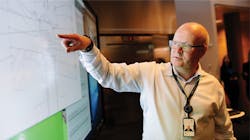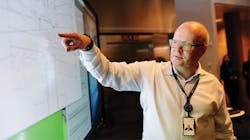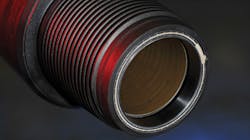Equinor advances its digitalization strategy
Equinor reportsthat it is moving forward with its digitalization strategy with great success, particularly with regard to enhancing production and improving drilling operations.
On the production side, the company says that its newly formed digital operations centers have enabled the company to create higher value, improve safety, and reduce emissions from its installations on the Norwegian continental shelf (NCS) have led to good results.
In early January, two centers were formally opened at Sandsli in Bergen by the petroleum and energy minister, Kjell-Børge Freiberg.
Equinor has set a goal of increasing value from NCS fields by more than $2 billion from 2020 to 2025, with the help of the digitalization centers.
New this year is that monitoring of the energy consumption to reduce CO2 emissions from NCS operations will be improved by support of the digital centers. By 2021, all Equinor fields on the NCS will be supported by manned onshore centers in Bergen, Stavanger, and Stjørdal.
Equinor official Egil Hustvedt demonstrates the digital twin of the Aasta Hansteen field. (Photo: Ole Jørgen Bratland/Equinor ASA)
Arne Sigve Nylund, Equinor’s executive vice president for Development and Production Norway, said: “So far, we see higher production and earnings from the Grane, Gina Krog and Åsgard fields, which have been supported by the integrated operations support center (IOC) since September. After that the Aasta Hansteen and Norne fields have also been connected to the center. This marks that we have just started phasing in our 40 installations to the IOC, revealing a great potential.”
“The good results are achieved by production optimization, improved condition monitoring and operations support for safe offshore operation. IOC will also be relevant for our onshore installations and international activities,” Nylund added.
Equinor says that the IOC center will be central in reducing CO2 emissions from the NCS. The company says it has implemented more than 300 energy efficiency measures on NCS installations from 2008 and up to the present, reducing annual CO2 emissions by almost 1.6 million tonnes so far. The company aims to reduce CO2 emissions by 3.2 million tonnes per year by 2030.
Equinor says that it is stepping up its use of wired drill pipe to acquire subsurface real-time data during drilling operations.
(Photo courtesy IntelliServ)
“We have set ambitious goals for changing and transforming the NCS to maintain high value creation and low emissions for the next decades. We have improved our operating efficiency, increased production, reduced our CO2 emissions and developed a highly profitable project portfolio. Digitalization, innovation and use of new technology will allow us to recover resources that are not profitable now,” says Nylund.
The other center, the Geo Operations Centre (GOC), will work to ensure more efficient and better geoscience control of drilling operations as well as higher cost saving and personnel safety. Monitoring and control of offshore well path drilling will be moved from offshore installations and the various onshore units to a joint geoscience operations center. The GOC is expected to save $31.7 million per year.
Kjetil Hove, head of operations technology on the NCS, said: “This is a completely new way of working and represents one of the biggest changes we have made in petroleum technology and geology during the last 20 years. The GOC will utilize new technology and help form a digital future, where tasks are carried out and experience gained and shared in smart ways.”
And, Equinor is advancing its digital strategy with other drilling technologies. The company recently announced that it is stepping up its use of wired drill pipe to acquire subsurface real-time data during drilling operations, in line with the corporate digitalization strategy and to prepare for automated drilling.
NOV and Schlumberger have been awarded corporate frame agreements for global deliveries of wired drill pipes to Equinor. Both suppliers use solutions from IntelliServ, which is owned by NOV and Schlumberger.
The wire inside the drill pipe allows high-speed data transfer. The signals transmitted through the drill pipe are estimated to be 10,000 times faster than the pressure waves of the drilling mud in conventional drill pipes. •


